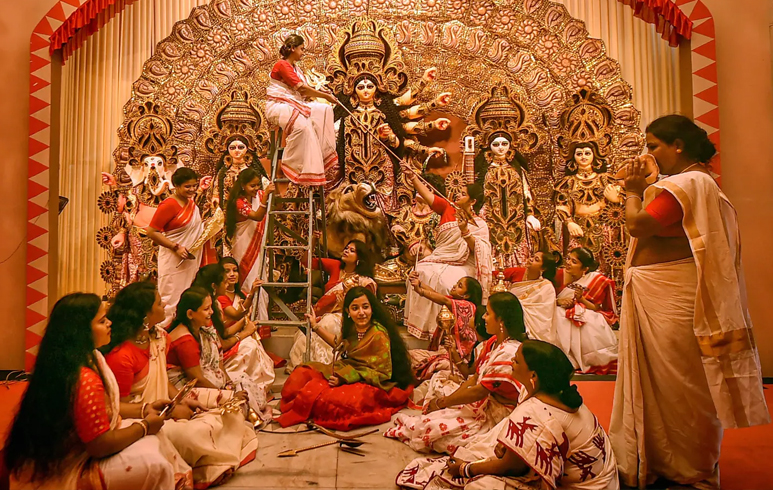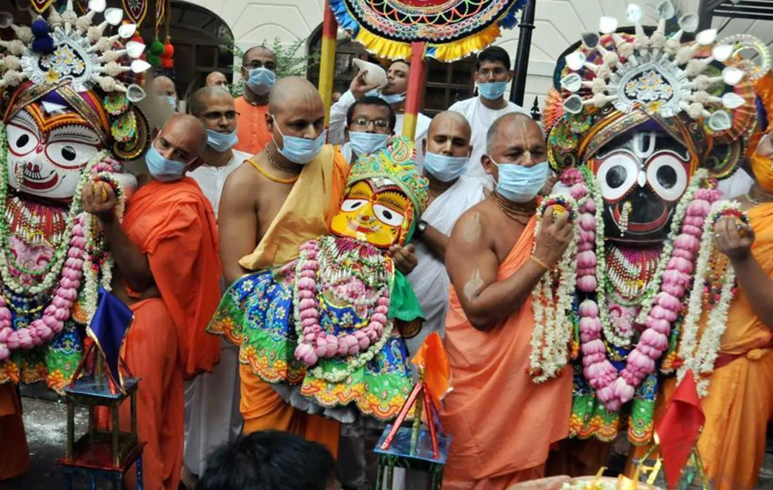About Kolkata (Calkatta )Tour Information
Calcutta - The former capital of East India company and at present the state capital of India is well connected and easily accessible from anywhere in India and abroad. The Netaji Subhas Chandra Bose Airport (Dum Dum airport) serves domestic as well as the International needs of this region. This airport is not only connected to the major cities of India but is also the transit point for the South East Asian nations and Australia. All the major Airlines have their flights to this city.
Calcutta one of the places which is famous as shoppers paradise. The markets of Calcutta are full of items which can be taken home as decorative pieces or gift items. Calcutta has been attracting the tourist attention for its handicrafts. The 'Tant' sarees are the speciality of West Bengal and Calcutta provides you the best market for the purchase these sarees. The Tant sarees are popular not only among the Bengali women but are liked all over India for their unique appearance and colours. Calcutta offers great bargains in items made from cotton and handloom. The famed Baluchari work is something which every traveller to this place looks for. The silk from West Bengal is a shoppers delight.
Home to four Nobel laureates - Ronald Ross, Rabindranath Tagore, Mother Teresa and Amartya Sen, Calcutta is the nerve centre of intellect and human values, where many modern movements began in art, cinema and theatre, science and industry. India’s quest for freedom began here.
Calcutta is the gateway to Eastern India. A city with a rich heritage, bustling streets and bewildering variety of facets. From October to March, Calcutta wears a radiant look. Sunshine, mild winter, lights, colours, fairs, festivals, galas and excursions, the mood is infectious and spirit sweeping.
It is the commercial nerve-centre of the East, with major industrial plants, textile mills and corporate units. Regal edifices, grubby alleys, bustling bazaars, elegant hotels, people from all walks of life - Calcutta has it all.
The city is a hub of fervent activity in the realms of music, theatre, arts, and sports. Calcutta has always prided itself on the many luminaries it has sent forth, be it Tagore, Satyajit Ray, or Mrinal Sen. The intense dedication to the arts manifests itself in a plethora of festivals, dance, music performances and other cultural events. The Calcuttans are also famous for their all-consuming passion for sports, especially, football and cricket.
Attractions in the City
Victoria Memorial :

Victoria Memorial is a splendid architectural structure in white marble, modeled on the Taj Mahal. It was built in the early 20th century, in memory of Queen Victoria and was formally inaugurated by the Prince of Wales in 1921. The noble bronze statue of the queen near the entrance, the brass canons, wrought iron street lamps, manicured lawns, gardens and pathways, the magical lighting effect in the evening and a fairy tale 'Fountain of Joy' facing the memorial building create an atmosphere of unforgettable charm.
Eden Gardens :

In the North-West corner of the Maidan are small & pleasantly laid out Eden Gardens. The gardens were created in 1840 and named after the sister of Lord Auckland, the former governor general. This lovely garden is dotted with beautiful trees and shrubs, intersected by winding paths, and there is a large artificial lake also. Alongside the gardens, is the world famous Eden Gardens cricket stadium. Near the gardens you can take a pleasant walk along the bank of Hoogly river.
Birla Planetarium :

Birla planetarium, near the government of India tourist office, is one of the largest in the world and is located on Kolkata's Eastern metropolitan bypass. It is one of its kind in India. There are shows in English everyday. Set amidst trees and lawns, here one explore the mysteries of science.
Kali Temple :

The Kali temple was rebuilt in 1809 on the site of a much older temple, Kalighat, the actual temple from which Kolkata takes its name. This temple is dedicated to Goddess Kali, who represents the destructive side of Siva's consort and demands daily sacrifices. This is an extremely busy temple. Mother Teresa's Hospital for the dying destitute is situated right next door to the temple.
Howrah Bridge :

Howrah bridge is one of three bridges on the river Hooghly. It is regarded as the most famous symbol of not only Kolkata but also West Bengal. Until 1943, the Hooghly River was crossed by a pontoon bridge which had to be opened to let river traffic through. There was considerable opposition to construction of a bridge due to fears that it would affect the river currents and cause silting problems. But this problem was eventually avoided by building a bridge that crosses the river in a single 450m span, the bridge has no pylons at all within the river. Other places of interest.
Sunderbans Tiger Reserve :

Howrah bridge is one of three bridges on the river Hooghly. It is regarded as the most famous symbol of not only Kolkata but also West Bengal. Until 1943, the Hooghly River was crossed by a pontoon bridge which had to be opened to let river traffic through. There was considerable opposition to construction of a bridge due to fears that it would affect the river currents and cause silting problems. But this problem was eventually avoided by building a bridge that crosses the river in a single 450m span, the bridge has no pylons at all within the river. Other places of interest.
Shantiniketan :

Shantiniketan is located 211 km from Kolkata. At Shantiniketan, an ashram was founded by Maharshi Debendranath, father of Rabindranath Tagore in 1863 AD. Almost 40 years later, Rabindranath started an open-air school at Shantiniketan. It gradually developed into an international university named Visva Bharti where the cultures of the East and the West meet in common fellowship. Thereby strengthening the fundamental conditions of world peace.
Ganga Sagar :

The Ganga Sagar is an important cultural and religious destination. It also has an outstanding beach for tourists, which is situated on the island in the Sunderbans. It holds the charm of a completely unspoilt beach on the estuary of the mighty Ganga. One can reach Ganga Sagar from Kolkata by bus.
Ramakrishna Mission Institute of Culture :

Commemorates the birth centenary of Shri Ramakrishna Paramahansa. Religious discourses and cultural exchanges are held here among international scholars. The institute is located at Golpark.
Nakhoda Mosque :

Modelled on Akbar’s tomb in Sikandra, the red sandstone mosque has two minarets 46 mts high, a brightly painted onion shaped dome and can accommodate 10,000 people. Built in 1926 and located on Chitpur Road.
St. John’s Church :

Built in 1787 with Grecian columns. The burial ground has the mausoleum of Job Charnok, founder of Calcutta. On the north-west side of Raj Bhavan.
Kolkata Fairs & Festivals
Durga Puja :

The most important and the most popular of all Bengali festivals is the Durgapuja. It is celebrated throughout the state, but with great grandeur in Calcutta. There are some ancestral houses in Calcutta where Durgapuja is being observed over decades and even over centuries.
Iskcon Rath Yatra :

The most important and the most popular of all Bengali festivals is the Durgapuja. It is celebrated throughout the state, but with great grandeur in Calcutta. There are some ancestral houses in Calcutta where Durgapuja is being observed over decades and even over centuries.